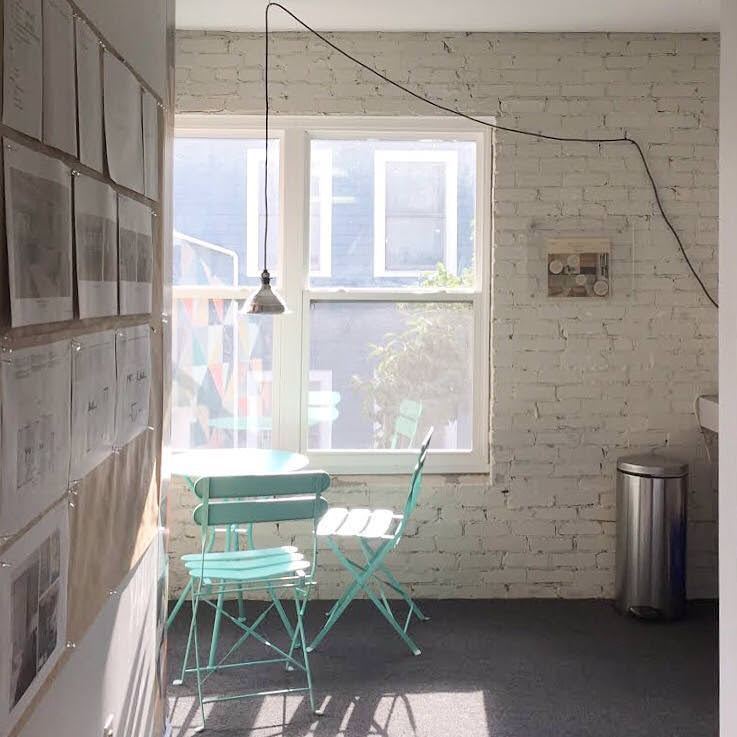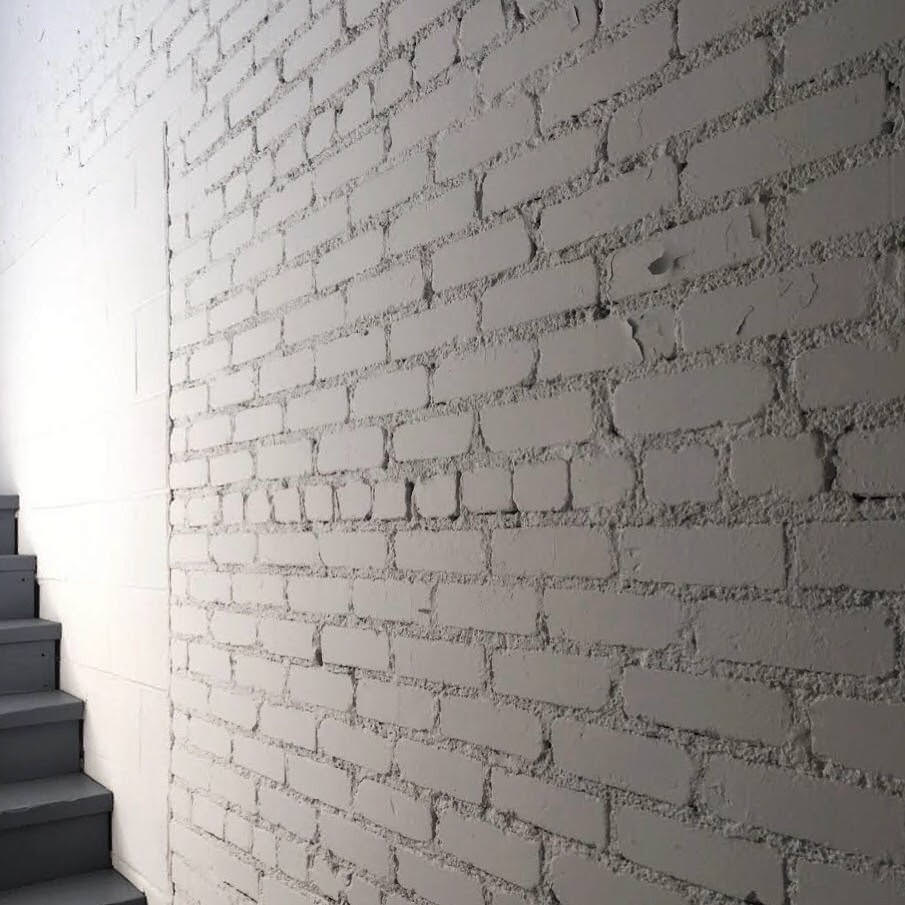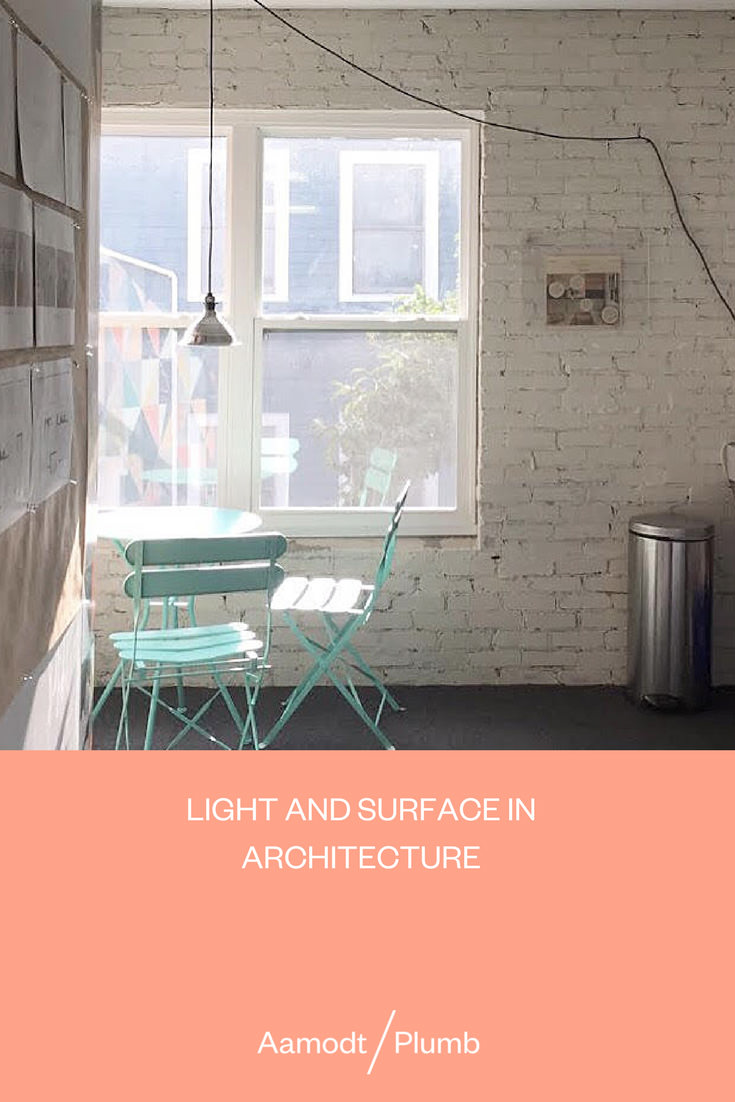
Designing With Natural Light
Light is a primary concern when designing a home. As human beings, we rely on vision to experience the world around us, and light plays an enormous role in how we see a space.
To be clear, the best light to illuminate your home is the sun. If I could turn it on at night, I often would. And when I design the lighting for a home, I consider, and often copy, how the sun illuminates the interior of the house.
Natural light has an amazing effect on people. It’s like a smile; people instinctively associate it with happiness. This phenomenon, the universal association between physical sensation and emotion, makes natural light so powerful and full of beauty.

A cozy corner in our studio fills with natural light in the middle of the day, making it an ideal spot for our little café.
People experience the world both consciously and unconsciously, and just as our conscious experiences stimulate conscious memories, our unconscious experiences stimulate unconscious memories. The most experientially fulfilling spaces use both ideas (allusion and symbolism) to stimulate conscious memories and the senses to stimulate unconscious memories.
Natural Light stimulates people both visually and thermally. Firstly, natural light, like all light, has a color. When natural light shines in a space, it changes the tones of what it illuminates. Secondly, natural light warms. We all know what it feels like to sit in the sun; we all have memories of playing outside on sunny days. When a space is filled with natural light, it takes on the tones of the sun and its temperature rises. The specific combination of colors and temperature stimulates our unconscious memories. We remember what it feels like to be in the sun, and we experience the spectrum of emotions tied to those memories. So when we design with natural light, we are designing with emotions, and whenever possible, we want to paint those emotions on the surfaces of a space. With artificial lights, we call this washing, but with natural light, we call it bathing.

The patchwork of concrete and brick walls in our studio are painted white to highlight the color of the sun, while using the texture of the masonry to reflect and diffuse the light.
When light shines on a surface, not only does the surface pick up the qualities of the light, but the light picks up the qualities of that surface; a surface’s color, texture and reflectivity change the quality of light in a space.
There are two ways to light a space; directly or indirectly. Direct light travels from the light source into a space directly, while indirect light reflects off or refracts through a surface, picking up the colors and textures of that surface before it enters a space.
When we design the lighting for a room, it is often helpful to think of that room as a lamp. A lamp has three basic parts: primarily, there is a light source, and depending on the kind of lamp, there is a reflector and/or a lens. The light source of a lamp is a light bulb, but for a room, it’s the sun. Reflectors and lenses for lamps come in many shapes and materials, and function in a multitude of ways. Generally, a reflector is a surface that changes the qualities, direction and intensity of light through reflection, and a lens is a surface that changes the qualities, direction and intensity of light, through refraction. In a traditional lamp, the lampshade is both a reflector and a lens, but for a room, every surface, window, curtain, wall, floor, ceiling, etc., can act as a reflector or a lens.

Light diffusion in a lamp compared with light diffusion in a space.
Once you begin to see the surfaces of your home as an integral part of the lighting design, you begin to understand the importance of the materials, as they influence how you feel in your home. A material’s texture is often the first thing we notice in a room, but we human beings are terrible at understanding texture with our eyes. Think of a rough exposed brick wall; you know what it would feel like to rub your hand against it. The bricks would have one texture, rough but still fine, and the mortar would have a different, coarser texture. Now, imagine the same wall and try to picture every bump and detail. It’s impossible. Our visual memory does not capture information at the same level of resolution as our kinesthetic memory. At a certain level of complexity, our brain stops trying to understand a visual stimulant as component parts and instead understands it as an incomprehensible whole. This is beauty. At Aamodt / Plumb, we prefer to use natural materials for one simple reason, they are beautiful. The inherent complexity and subtlety of the texture and color created in nature is incomparable to anything created by people. We create beautiful spaces through the calibrated combination of natural light, natural surface materials and an understanding of everyday phenomenology.
Our visual memory does not capture information at the same level of resolution as our kinesthetic memory.
The spaces where you live, work and visit have a huge impact on your life, health and mood. That is why we started the Slow Space Movement, to create buildings of enduring value for the world, using the planet’s precious resources judiciously and wisely, and supporting the community of artisans and craftspeople.






Brooke Robinson
love the way this articulates the essence of light in architecture and its contribution to creating spaces of beauty!